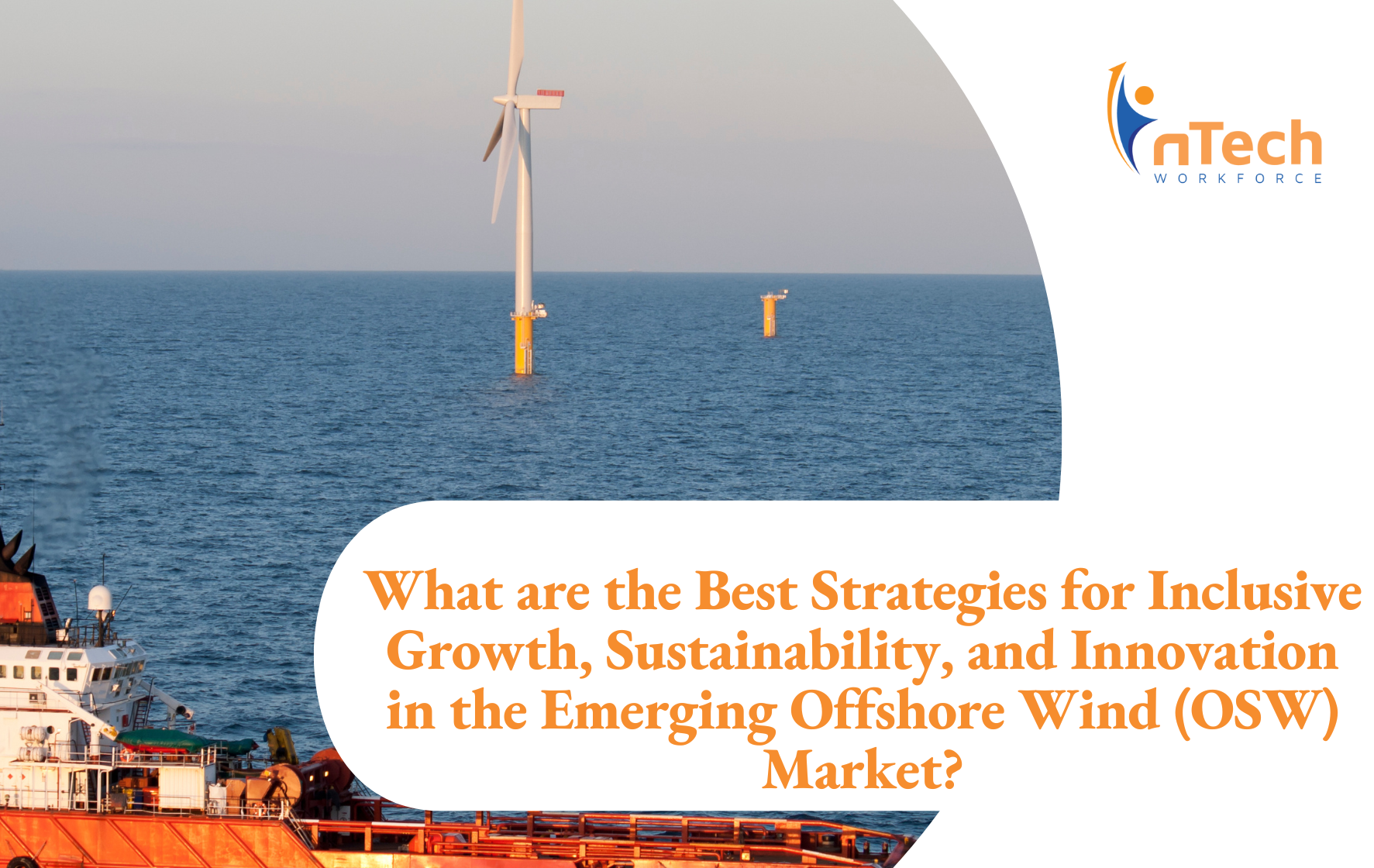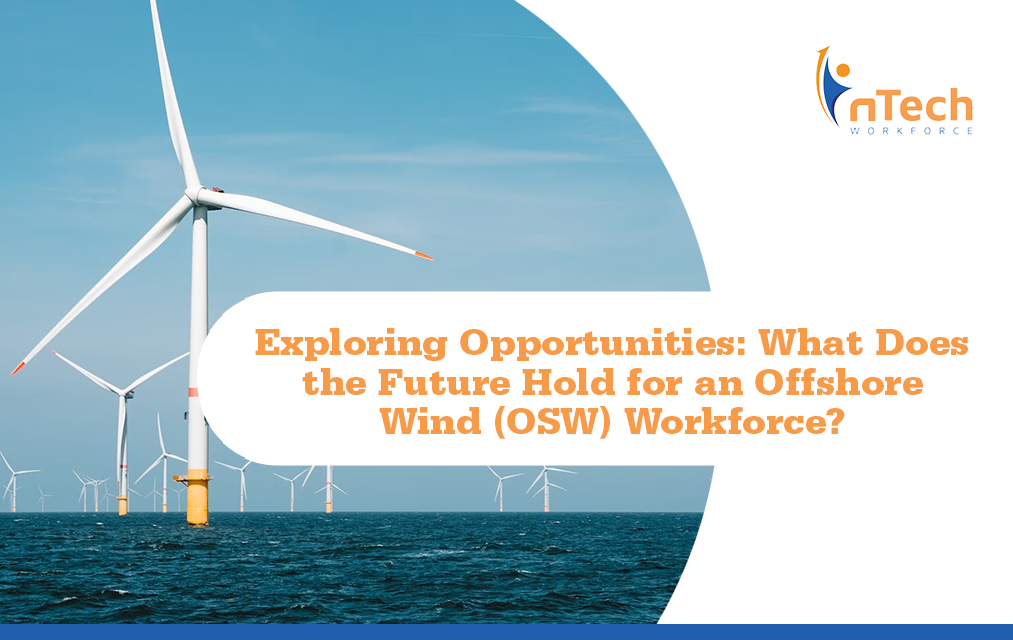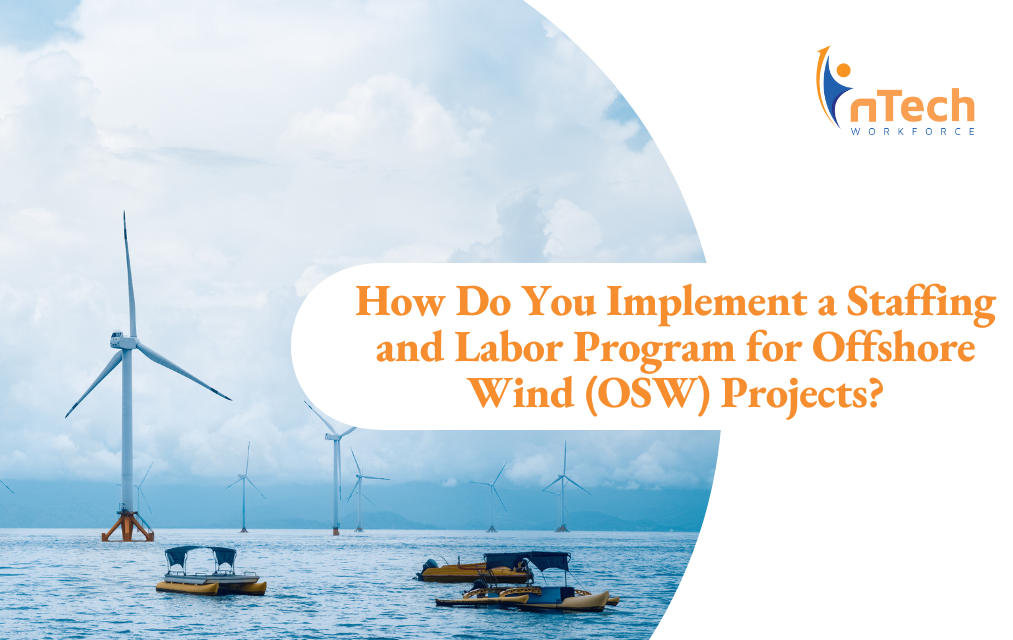Exploring Opportunities: What Does the Future Hold For an Offshore Wind (OSW) Workforce?
According to a report by the Global Wind Energy Council, 2023 will be the first year in which global new capacity for offshore wind will exceed 100...
-1.png?width=303&height=403&name=Job%20Seekers%20Mega%20Menu%20(1)-1.png)
Check out our nSider Hub for all of nTech's staffing-related resources.
5 min read
![]() nTech Workforce
:
Aug 28, 2023 8:00:00 AM
nTech Workforce
:
Aug 28, 2023 8:00:00 AM

The emerging offshore wind market presents a promising and innovative frontier for sustainable energy. As the world shifts toward greener solutions, it's vital to approach this burgeoning industry with a strategy that fuels growth while ensuring inclusivity, ethical practices, and long-term success. The blend of these elements can be a challenging endeavor, but with the right approach, developers can navigate this new terrain with a vision that reflects both opportunity and responsibility.
In this edition of nSider, Arthur Ransier, Director of Business Strategy at nTech Workforce, talks about the best strategies for inclusive growth, sustainability, and innovation in the emerging offshore wind market. Drawing from his journey from poverty to leadership, he provides a unique perspective on building a future where everyone has equal access to opportunities and the chance to thrive in this exciting new field.
Inclusive recruitment and development strategies are pivotal in building a workforce that reflects the diverse world we live in. In the context of the offshore wind market, a field ripe with innovative possibilities, this inclusive approach enhances creativity by inviting a broad spectrum of ideas and perspectives.
At nTech Workforce, we recognize that tapping into the varied backgrounds, experiences, and talents of different individuals fosters a culture of innovation. By encouraging an environment where everyone's voice is heard, we're opening doors to unexpected solutions and fresh ways of thinking. It's a belief that resonates with our vision of a future with better access to opportunity. "Embracing diversity isn't just a moral imperative; it's a strategic one,” Ransier claims, explaining that “By inviting all voices to the table, we unlock the full potential of innovation, aligning our mission with both heart and intellect."
Why should offshore wind (OSW) developers and general contractors work with a staffing intermediary?
In the business context, inclusion-driven creativity isn't just a noble idea; it's a pathway to profitability. Diverse teams often find novel approaches to challenges, which positions the company as a leader in the competitive offshore wind market. By mirroring the diversity of our communities within our organizations, we're not only doing what's right but also what's smart. This nurtures a culture that's not just inventive but inviting, compassionate, and ready for the future.
Sustainability, social responsibility, and supply chain diversity are not mere buzzwords; they form the backbone of successful offshore wind energy initiatives. The complex emerging market of offshore wind energy demands an understanding that these elements are interconnected and vital for long-term growth. Sustainability is more than adhering to regulations; it's embracing innovative practices that align with global efforts to address systems change. By investing in renewable energy technologies and adopting environmentally responsible processes, companies can contribute to a more sustainable future.
Social responsibility extends beyond business. It encompasses investing in local communities, creating jobs, and engaging in practices that positively impact the regions where companies operate. Being socially responsible means recognizing the larger role businesses play in society.
Supply chain diversity enriches a network with different perspectives, fostering economic inclusivity and sparking innovation. By expanding and diversifying the supply chain, companies open doors to new ideas and solutions, enhancing creativity within the industry.
How do you implement a staffing & labor program for offshore wind projects?
These approaches lay the foundation for a comprehensive strategy that resonates with current values and expectations. By championing sustainability, embracing social responsibility, and nurturing supply chain diversity, offshore wind energy companies can build a robust, thriving, and conscientious industry.
In the rapidly evolving renewable energy landscape, aligning industry demands with educational pathways is essential. Partnerships between educational institutions and renewable energy companies can bridge this gap, fostering innovation and preparing the next generation for the opportunities and challenges ahead.
By collaborating with schools and universities, the renewable energy sector can create specialized training programs that focus on the unique needs of the industry. Such collaborations don't only enhance the technical skills of future professionals but also imbue them with a sense of purpose and vision. These partnerships can lead to the creation of curricula that emphasize sustainability, innovation, and social responsibility, principles that are integral to the renewable energy sector.
Ransier, reflecting on this synergy between education and industry, stated, "Building bridges between academia and the renewable energy industry isn't just about filling job vacancies; it's about co-creating a future. By nurturing minds that dare to innovate and challenge the status quo, we are sowing seeds for an energy landscape that is not only sustainable but also revolutionary. At the intersection of education and industry, we find hope, opportunity, and the momentum to drive real change."
The integration of educational programs with real-world applications empowers students to translate theoretical understanding into actionable solutions. These partnerships create a platform for innovation, where young minds are encouraged to think creatively, challenge existing paradigms, and contribute to a future that's not only energy-efficient but also socially responsible and economically viable. The road to a sustainable future is paved with collaboration, and educational partnerships play a pivotal role in this journey.
In the burgeoning field of renewable energy, the success of technology extends beyond engineering and efficiency. It's about creating solutions that resonate with users and seamlessly fit into their daily lives. Investors and supply chain leaders recognize that the actual value lies in accessibility and appeal to the end user.
Design and user experience (UX) in renewable energy technologies mean crafting systems that are not just functional but also user-friendly. A well-designed interface can accelerate adoption, turning renewable energy from a specialist's choice into a mainstream option. For supply chain leaders, this means a broader market and increased demand.
Data-driven decision-making complements this approach by providing actionable insights to enhance performance and customer satisfaction. It's about utilizing data to understand what users want and need, allowing for intelligent investments and strategic planning. For investors, this ensures that funds are directed toward innovations that have real market potential, enhancing return on investment.
In a nutshell, prioritizing design, UX, and data analysis is a strategic move that aligns renewable energy technologies with consumer preferences and market demands. It's an approach that recognizes the human element in technology, ensuring that renewable energy solutions are not only viable but also desirable. By focusing on these aspects, investors and supply chain leaders can tap into new markets, increase demand, and see growth in this exciting field.
In the rapidly evolving offshore wind market, a forward-thinking approach is essential.
Cultivating innovation provides a competitive edge, not only in product development but also in refining processes, identifying new market opportunities, and attracting top-tier talent. Investors and executives can expect increased adaptability to market shifts, fostering resilience against unforeseen challenges. Innovation also unlocks potential revenue streams by leveraging technology and creativity to outpace competitors.
Forming strategic alliances amplifies these benefits by forging partnerships aligned with core business objectives. In an industry like offshore wind, the integration of unique competencies across companies can yield synergistic effects, accelerating technological advancements, and optimizing resource allocation. Collaborations can open doors to new markets, allowing for efficient scaling, cost-effective growth, and risk mitigation.
For investors and business executives, embracing a culture of innovation, coupled with forming strategic alliances, is a pragmatic strategy. It enhances value creation and secures a strong foothold in the burgeoning offshore wind market, translating to sustainable growth and a positive return on investment.
Over the next decade in the US offshore wind market, billions of investor and ratepayer dollars will be spent to align efforts for developing a domestic supply chain and workforce. Each decision you make is an investment; prioritizing recruiting strategies, support systems, strategic partnerships, user experience, and other sustainable approaches in building this new market will ensure the greatest return and impact. For a developer entering the emerging offshore wind market, consider stacking your supply chain with partners like nTech Workforce which will help to meet your goals, maximize the return on investment, and otherwise secure your investments.

According to a report by the Global Wind Energy Council, 2023 will be the first year in which global new capacity for offshore wind will exceed 100...

Arthur Ransier, Director of Business Strategy at nTech Workforce, highlights this monumental opportunity for offshore wind investors and contractors,...

OSW faces the same “war for talent” and general constraints as other sectors. An essential part of scaling and securing long-term return on...